While most sounds in your home are acceptable, there's one room in particular that you don't want people listening in on—the bathroom.
At night the flushing of the toilet or running water from the faucet can be very distracting for people trying to sleep. This is especially true if the bathroom is near your bedroom.
By soundproofing your bathroom, you will have the freedom to go to the bathroom, shower, and shave without disturbing your family or roommates.
With that in mind, let's take a look at several strategies you can employ to absorb and diffuse sound in your bathroom.
The goal when soundproofing any space is to suppress, reflect, diffuse, and absorb airborne and structure-borne noise.
Let's take a closer look at these two types of noise.
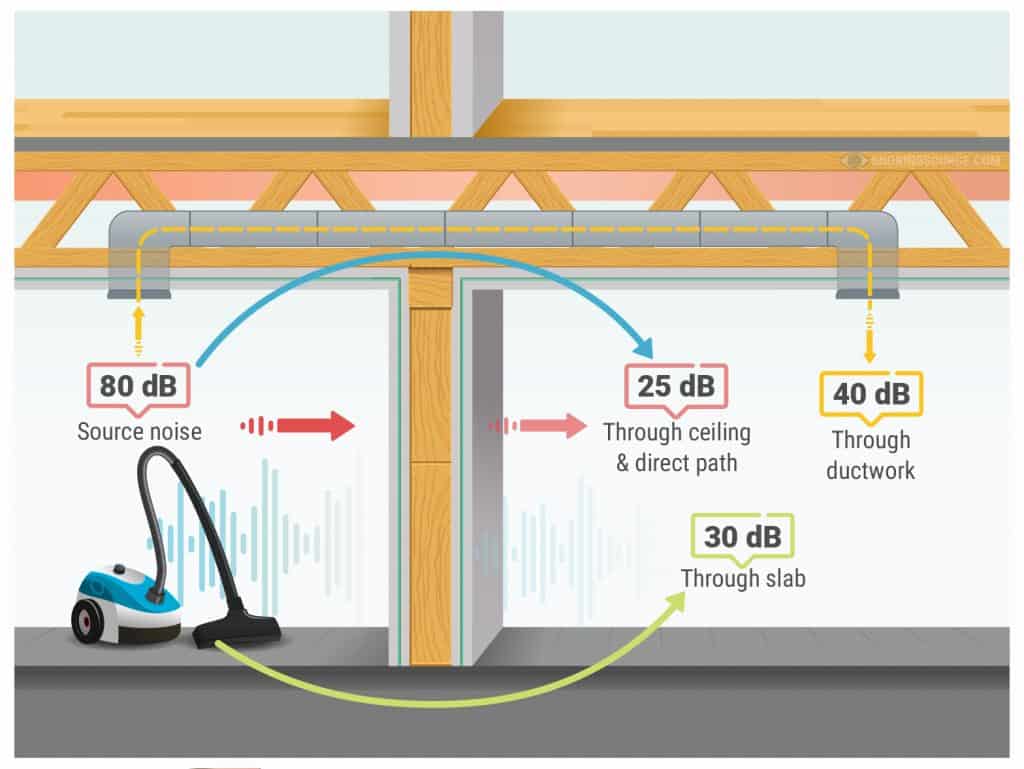
As the name suggests, airborne noise is transmitted through the air through sound waves. Some examples include running water, a beard trimmer, a hair dryer, or a toilet flushing.
Sound waves from airborne noise are picked up and carried through air until they collide with a solid object. The collision of the sound waves transmits vibrations through the object and into the space beyond it.
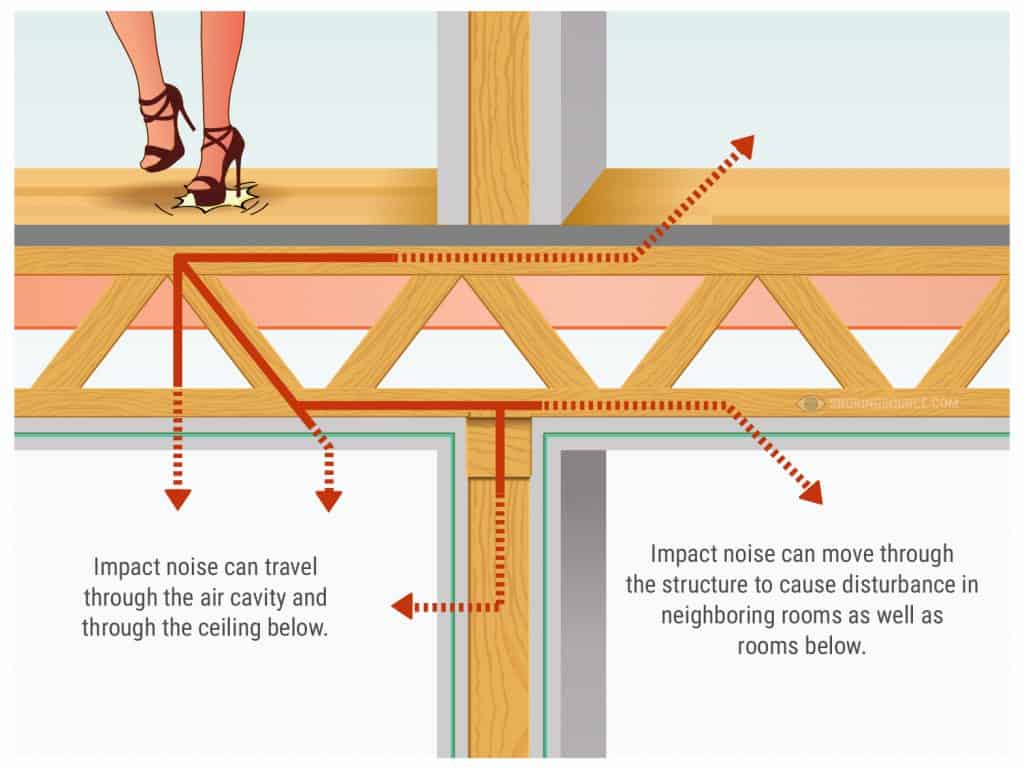
Unlike airborne-noise, structure-borne noise occurs when an object impacts a solid structure. As a result of the impact, soundwaves travel through the structure and resonate to the adjacent rooms.
Examples of structure-borne noise include footfalls, knocks on a wall, or dropping your razor on the floor.
These types of sounds differ and as a result the soundproofing methods used to combat them are also different.
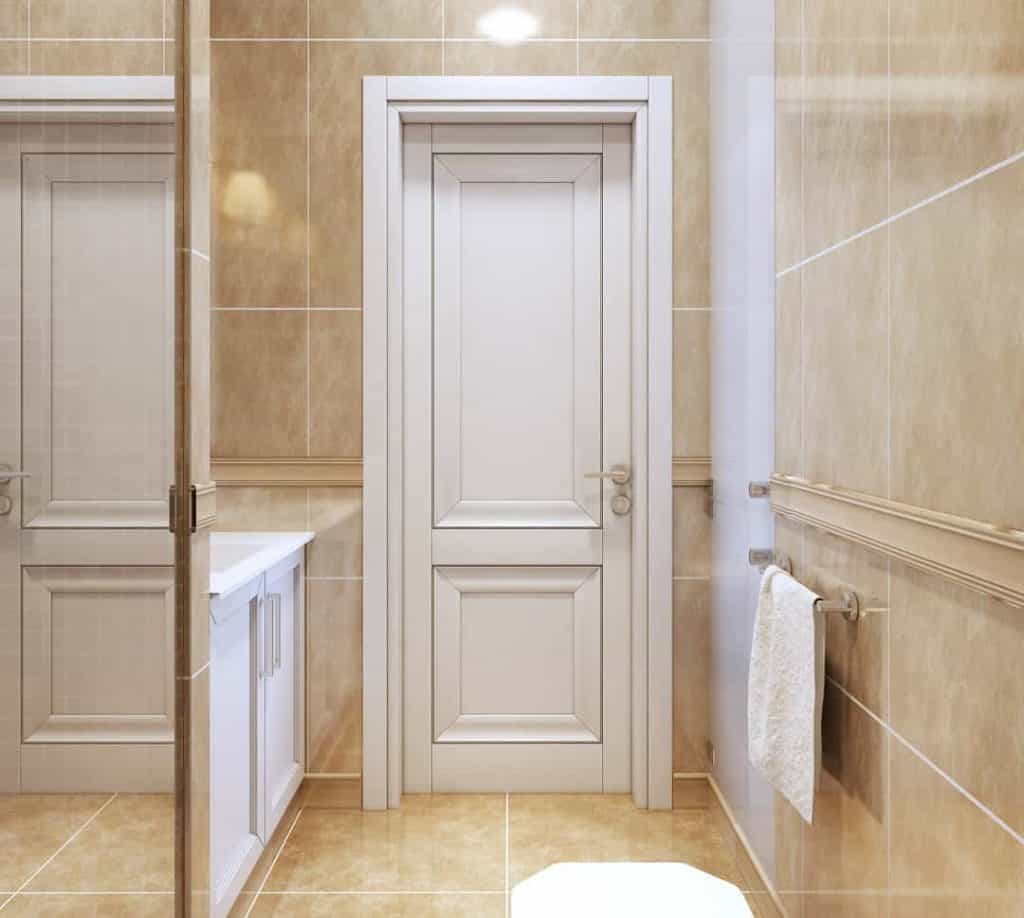
The most important target for soundproofing any room is the door. Most interior doors aren't built with soundproofing in mind. They're made from thin materials and a relatively hollow core.
It's important to remember that mass blocks sound. Since interior doors are made of relatively thin materials, the easiest way to add mass/density is by simply replacing it with a solid-core door.
However, the added weight results in increased material costs and an expensive replacement. If you have the budget, look for a thick slab-style door.
If you don't have the budget, you can add mass to the door by affixing a layer of Mass Loaded Vinyl (MLV) to the room-side of the bathroom.
To prevent air leaks in your door:
To verify that you've sealed all the leaks, stand on the room-side of the bathroom, shut the door, and turn off the lights. If you see light shining through, you have an air leak that sound can travel through.
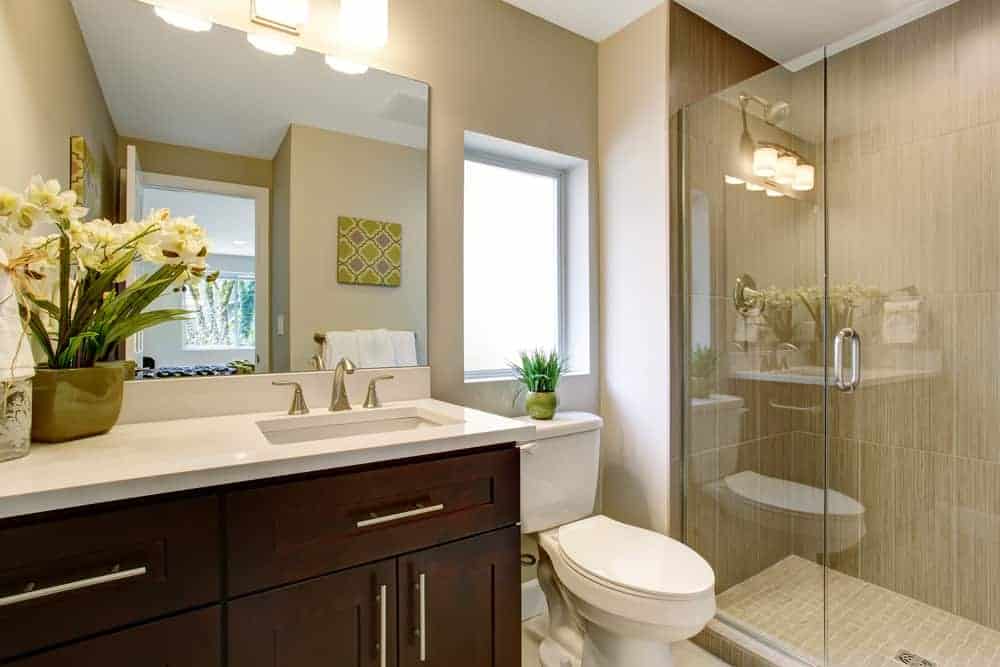
Soundproofing the walls in a bathroom isn't something most people consider during construction of their home. As you might expect, soundproofing walls is much easier during construction rather than after the fact.
As we've learned above, one of the best ways to go about soundproofing is by increasing both mass and density. If you're building walls with soundproofing in mind start with the following:
If you're looking to soundproof walls after the fact your options are bit more limited:
Consider blown insulation. This type of insulation is comprised of low-density cellulose material that can effectively minimize the transfer of soundwaves. It works by trapping pockets of air which results in dead space that traps soundwaves.
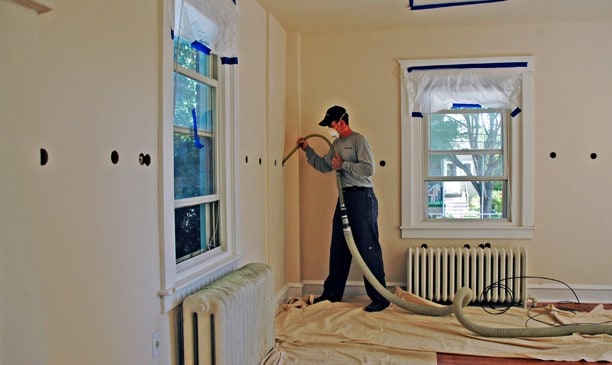
Installing a second layer of drywall over the existing drywall is another option. This works based on the premise of adding mass to the wall to minimize the transmission of soundwaves. For additional soundproofing capabilities, create a wall assembly of drywall and green glue.
You can hang soundproofing drapes from curtain rods over the door. In a similar way, the dense fabric helps to add mass and deaden sound.
Lastly, get creative with the furniture, towel racks, and decor in the space. The more space soundwaves have to move around, the more energy they'll expend.
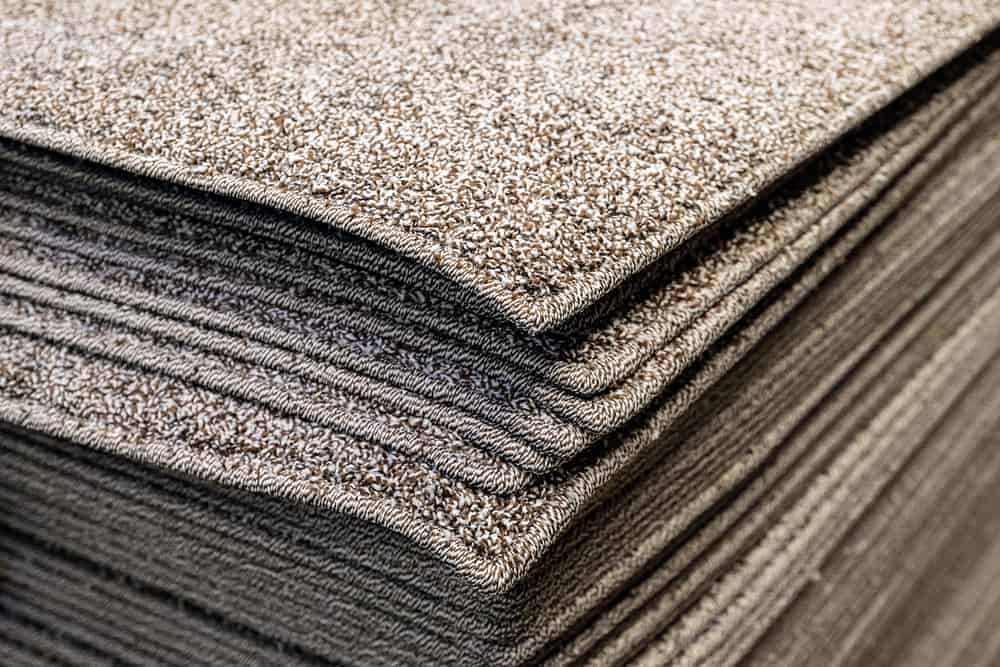
Most bathrooms make use of materials like porcelain tile because it's waterproof, durable, and cost-effective. The only downside is that noise can travel more easily through structures (impact noise).
If you have the budget, remove the existing floor and install a floor assembly of either cement board and tile or Schluter Ditra and tile. These materials are waterproof and help to absorb impact sound.
If you don't have the budget, invest in thick bath mats. You could also create your own "soundproof mats" by affixing a layer of mass loaded vinyl to the bottom of a standard bath mat for additional cushion.
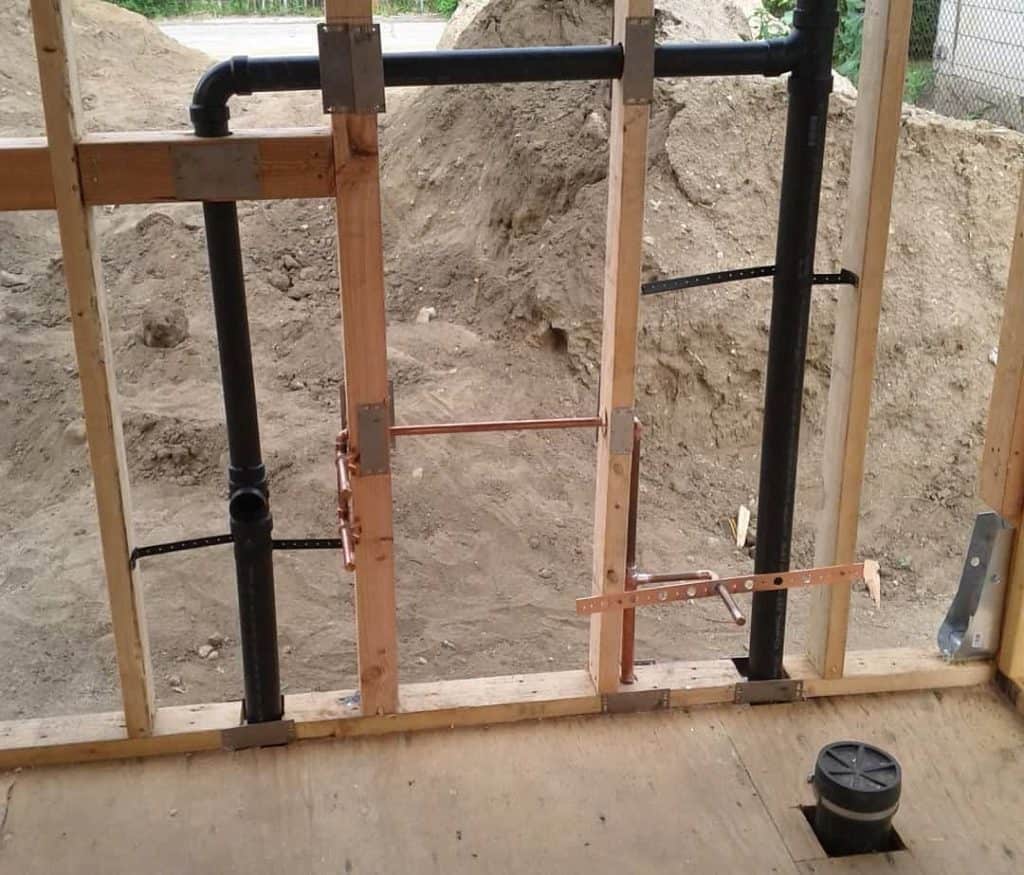
Bathroom pipes are notorious for making a rattling noise. If you hear rattling pipes from your bathroom, a good place to start is by tightening the mounting straps or clamps that hold the pipes in place.
The next thing to consider is soundproofing the pipes themselves. Like the rest of the bathroom, soundproofing during construction is ideal as you have full access to the pipes.
However, you can soundproof pipes in two major ways: fill the pipe cavities or wrap them in sound absorption materials.
Wrapping the pipes is usually the easier of the options. When looking for materials to use, ensure they can be wrapped around your pipes (PVC, cast iron, or copper).
The wraps are usually made of materials like polyurethane foam to help deaden impact noise.
Lastly, one of the easier things to do is to replace your toilet seat with a soft-close option. These toilet seats ensure that impact noise isn't generated.
Soundproofing your bathroom is one of the best steps you can take to make everyone—your family members and guests—feel more comfortable in your home.

Snoringsource.com is a participant in the Amazon Services LLC Associates Program, an affiliate advertising program designed to provide a means for website owners to earn advertising fees by advertising and linking to amazon(.com, .co.uk, .ca etc) and any other website that may be affiliated with Amazon Service LLC Associates Program.